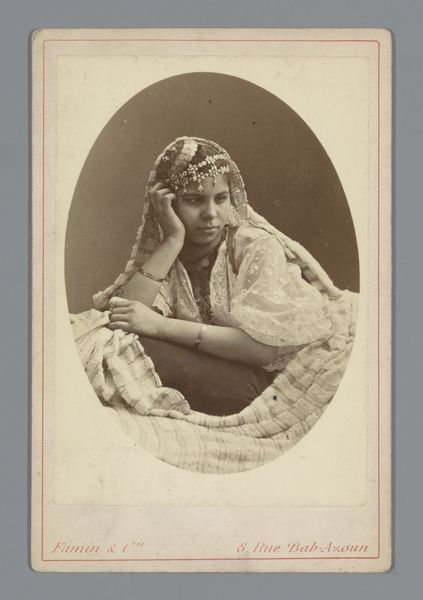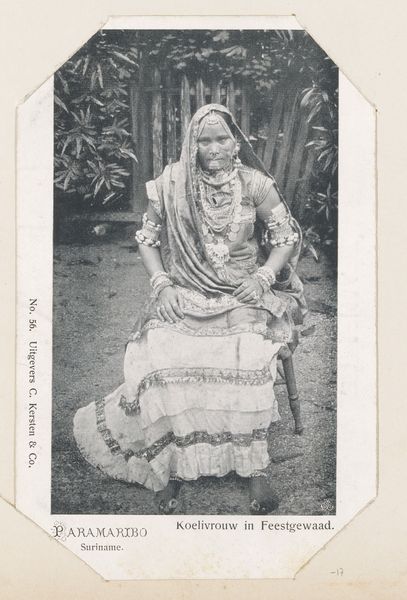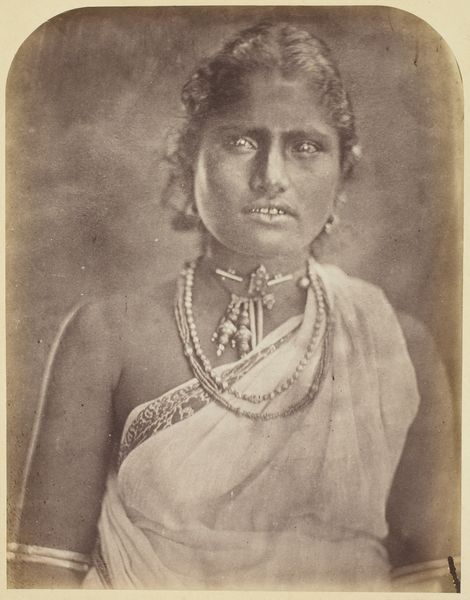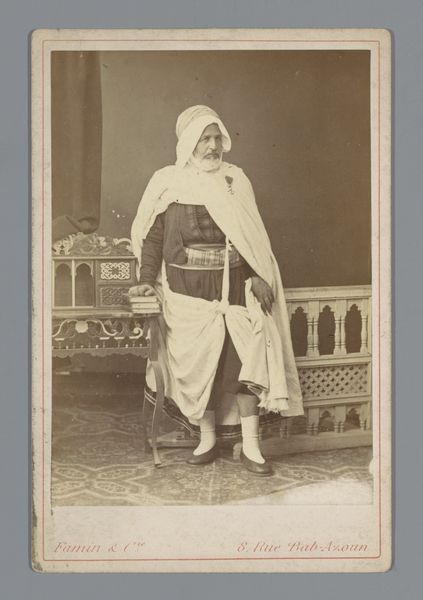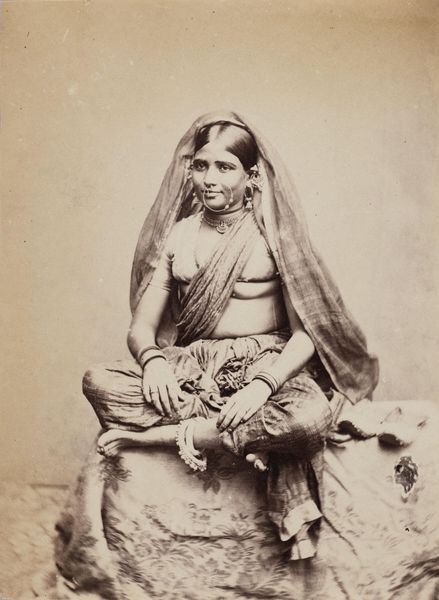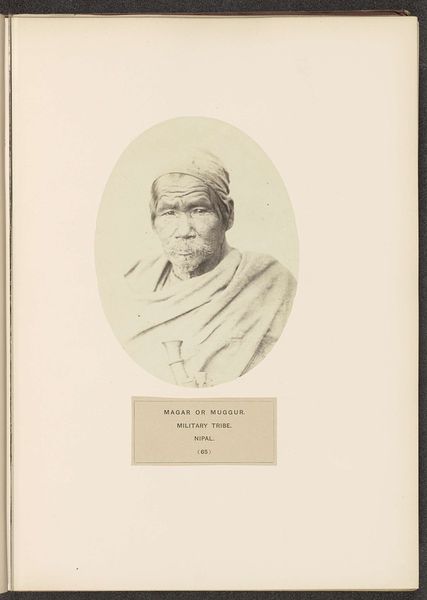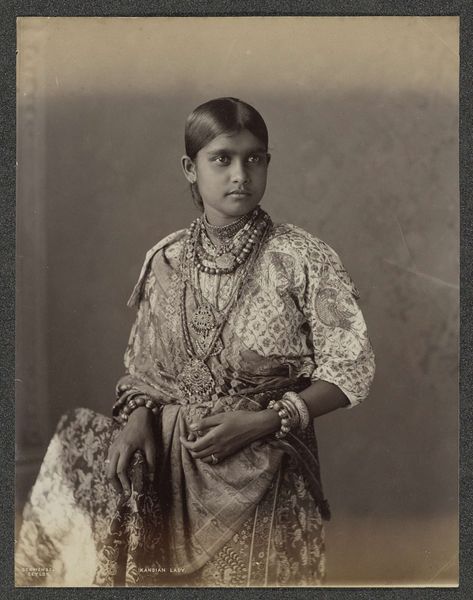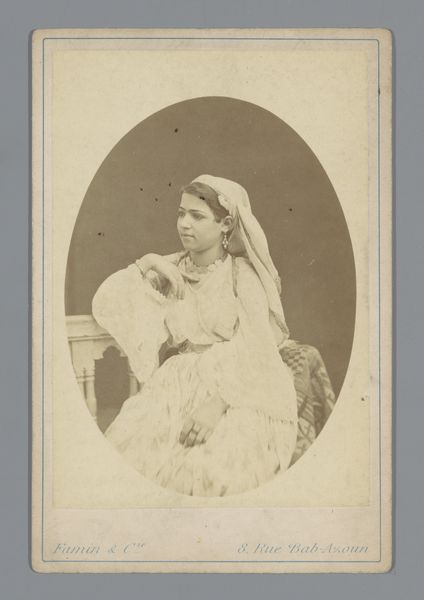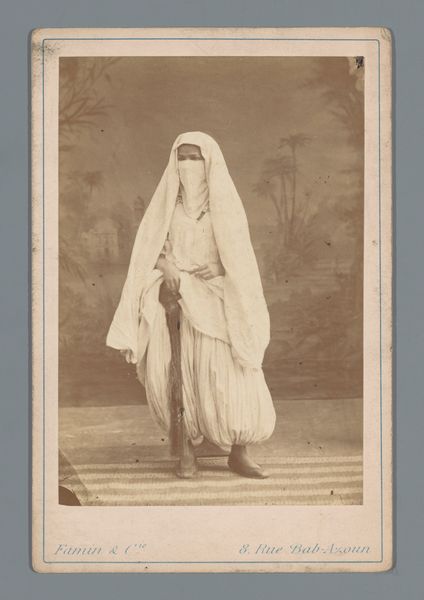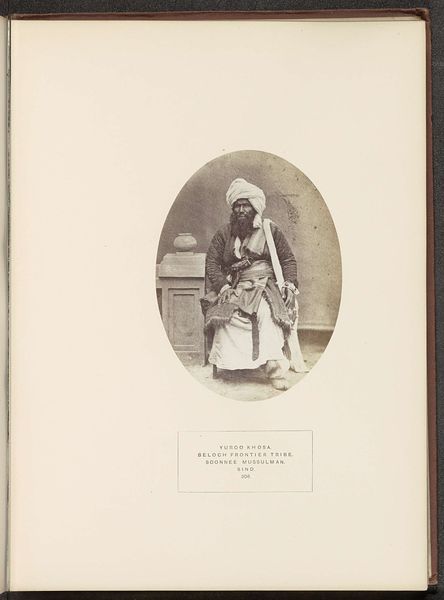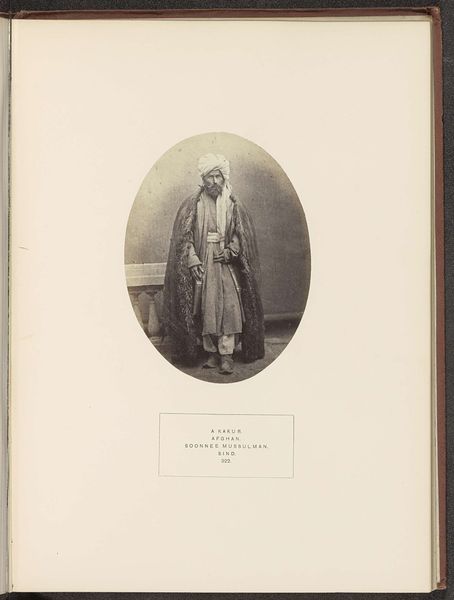
photography, albumen-print
#
portrait
#
photography
#
historical fashion
#
orientalism
#
albumen-print
#
realism
Dimensions: height 197 mm, width 153 mm
Copyright: Rijks Museum: Open Domain
Curator: Here we have an albumen print photograph entitled "Hindostaans meisje," or "Hindustani Girl," taken sometime between 1900 and 1905 by Eugen Klein. Editor: The sepia tones lend it a gentle, nostalgic air, but her direct gaze is very present. I notice that her hands are clasped tightly. There's a formality, almost a stillness, that draws you in. Curator: Absolutely. The term "Hindustani" in this context points to the indentured laborers brought from British India to Suriname during that era, which speaks volumes about colonial power dynamics. Editor: Those bracelets, that headpiece… she's adorned with such specific ornamentation. To me, the jewelry signals status, perhaps resilience in the face of displacement, maybe even subtle defiance. Curator: Precisely! This is a carefully constructed image intended to portray a certain image of the 'exotic other.' It intersects with ethnographic practices and, frankly, colonial exploitation. The pose is studied, controlled… Editor: And that very control—the carefully placed hands, the steady gaze— could be seen as an act of reclaiming some agency, of projecting a strength that challenges the stereotype. It’s a complex dance of symbolism and resistance. Curator: It forces us to think about photography’s role within broader societal narratives around race and cultural representation, and raises key questions about whose story gets told, and how. Editor: Seeing this young woman's portrait stirs a blend of sorrow and a deep, unexpected hope. Even within the frame of colonial gaze, her gaze reminds me of the enduring power of identity and the stories held within individual lives.
Comments
No comments
Be the first to comment and join the conversation on the ultimate creative platform.
